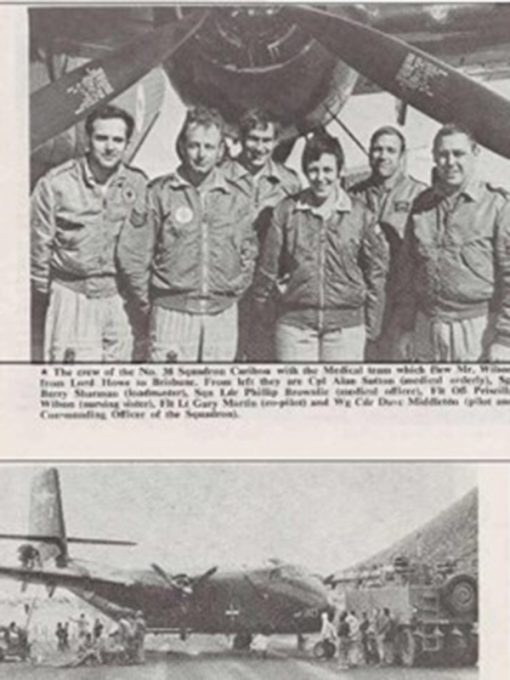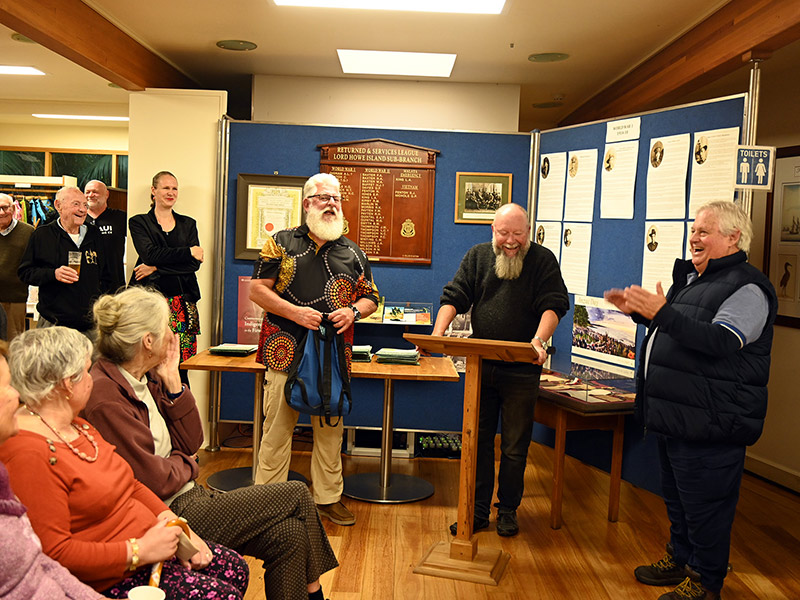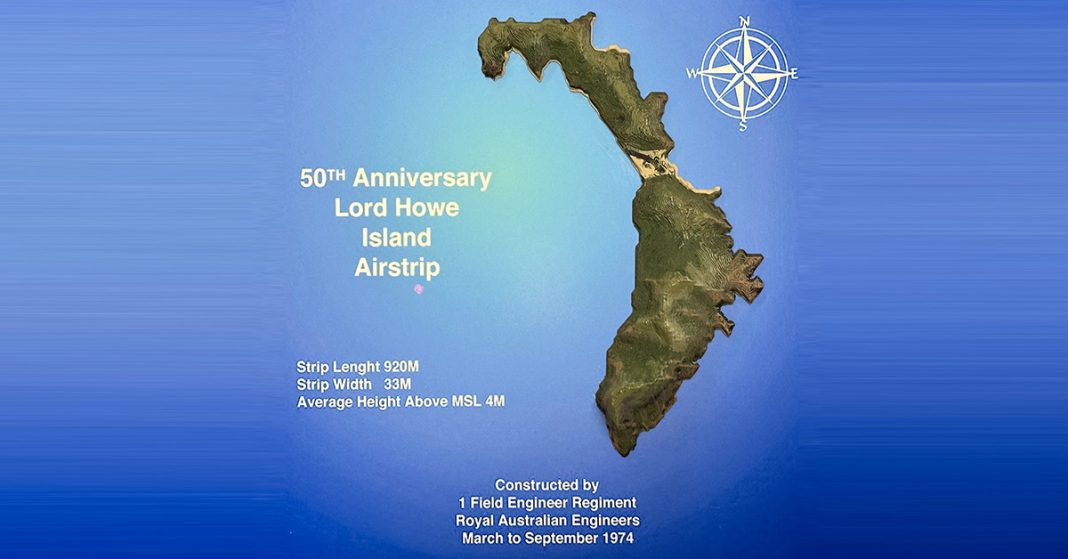During the week beginning 9th September, there were celebrations on the Island to mark the completion of the Lord Howe Island airstrip in September, 1974.
Around 50 members of the Australian army and navy, with family members, who were part of the project, visited to mark the anniversary. Two events were held at the public hall and the veteran’s group had a walk on the airstrip on Thursday, 12th September.
On 13th September, the Lord Howe Island Historical Society welcomed the visiting people to the Museum to meet members, and view displays prepared for the event. President, Hayden King, made a short welcome speech and visiting army veterans presented the Museum with a plaque designed and manufactured to mark the event, and a booklet with photographs and details of the Navy involvement in the project.
The original transport to and from the Island was, of course, by ship; and after World War II flying boats transported people to the Island. The flying boats were expensive to operate and – in violent weather – were prone to be driven off their moorings and onto the beach.
On the mainland, in the post World War II period, land aircraft developed rapidly and many airstrips were built around the nation. In researching our archives, the Signal newspaper of November, 1955, provides the Museum’s earliest record of local interest in an airstrip with the Island Advisory Committe calling a meeting to gain public support for the construction of an airstrip on the Island.
Over the next few decades there were studies, meetings, proposals and costings, moving towards the construction of an airstrip for the Island.
A number of sites were investigated – one was to build the strip from Ned’s Beach through Stevens Reserve to the beach opposite the museum today!
As the flying boats were aging, and being damaged in storms, talk of the airstrip became urgent. In October, 1970, there was an announcement that the Commonwealth would fund 75% of the cost of the airstrip construction. In February, 1973, the general manager of Airlines of NSW, Phil Steadman, made an announcement the flying boat service would cease later that year. This accelerated the proposal and the Australian Army were contracted to carry out the construction.
On Sunday, March 3rd, 1974, three Navy LCH ships arrived with 400 tonnes of heavy equipment and plant. On the 4th and 5th of March, the first contingent of 61 army personnel arrived via the flying boats: Captain Tony Coyle was in command of the construction detachment; Lieutenant Gary Springhall was Administrative Officer; Lieutenant Gary Barker was the Survey Officer; and W/O Terry Melville the Plant Supervisor. Army personnel were accommodated at Leanda Lei lodge which was used exclusively by the Army for the duration of the project.
There were not as many environmental regulations in 1974, and it took just six months to complete the airstrip. Calcarenite sandstone was removed from Kirribilli Hill near Cobby’s Corner to provide ballast underneath the strip. The rocks needed for the seawall to protect the airstrip at the lagoon end were collected from the Little Island area and a road was constructed from Salmon Beach to Little Island to facilitate this operation.
Some statistics:
- More than 61,000 cubic yards of material was removed from the strip site.
- 101,000 cubic yards of suitable material was carted from “Kirribilli Hill” and spread on the airstrip site.
- Each army truck carried 5 cubic yards of material.
- Hundreds of tonnes of rock was stockpiled at Little Island and 4,500 cubic yards was transported to the site of the wall into the lagoon.
Following Intense lobbying by locals, the Board and other interested parties, there was a whirlwind schedule almost unimaginable today including:
- 4/3/1974 – Construction of the airstrip by the Australian Army Engineers commenced.
- 4/8/74 – First test landing – a medical evacuation – on the new airstrip by an RAAF Caribou from No. 38 Squadron, Captained by David Middleton, with a full medical team on board.
- 11/9/74 – First charter flight landed, with Department of Transport and Government officials aboard.
- 16/9/74 – The Army finished work on the aerodrome.
- 19/9/74 – First regular air service arrived, Airlines of NSW Riley Heron, VH-CLV (Alice).

The original brief was to construct a grass airstrip but, when the engineers studied the characteristics of the unusual calcarenite soil here, it was decided to seal the airstrip. So blue metal, tar and equipment had to be brought to the Island.
Come and see our special display inside the Museum which features a double-sided storyboard (1m X 3m) illustrating the key events with images, plus a TV monitor with a changing display of over 100 photos.
At the time of the airstrip’s construction many friendships were made and – right up until now – the Lord Howe Island community remains very appreciative of the efforts of all those involved fifty years ago.
The first aircraft to land on the airstrip was a RAAF Caribou, which flew in atrocious weather in order to evacuate Wally Wilson, whose leg was pinned under a falling tree following a chainsaw accident. All the Island residents were there to watch the first landing.
The last flying boat operated on 10th September, 1974, and small commuter aircraft immediately began air services to the Island. In 1989, the Dash 8 aircraft was introduced by Norfolk Airlines, and this service was expanded by Eastern Australia Airlines (a subsidiary of Australian Airlines) from June, 1991. When Australian Airlines was merged with Qantas (1992) the Dash 8 service was continued by QantasLink. However, smaller aircraft, like the Beechcraft King Air and Piper Chieftain, continued to play an important part of the passenger and freight services operating on the Lord Howe airstrip.





